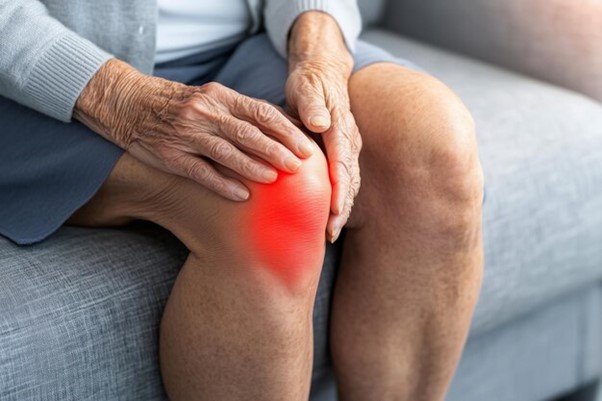What Is Knee Osteoarthritis?
Osteoarthritis, often referred to as “wear-and-tear arthritis,” is a degenerative joint disorder that arises when the cartilage cushioning the joints breaks down. This leads to the bones in the knee rubbing against each other, resulting in swelling, pain, stiffness, and reduced mobility. Over time, the wear and tear can also lead to the formation of bone spurs, exacerbating the condition. Knee osteoarthritis is the most common form of arthritis and significantly impacts daily activities.
Who Is at Risk for Knee Osteoarthritis?
While osteoarthritis can develop at any age, the likelihood increases after the age of 45. Women, especially those over 55, are at a higher risk than men. Key risk factors include:
- Excess Weight: Carrying extra pounds puts additional stress on knee joints.
- Genetics: A family history of OA can increase susceptibility.
- Repetitive Stress: Jobs or sports that place repetitive strain on the knees can contribute to the development of osteoarthritis.
- Pre-existing Conditions: Conditions like rheumatoid arthritis or metabolic disorders can also increase the risk.
Athletes involved in high-impact sports are particularly vulnerable, especially if they have a history of knee injuries.
What Are The Common Symptoms of Knee Osteoarthritis?
Individuals with knee osteoarthritis often experience:
- Pain: Typically aggravates with activity and improves with rest.
- Swelling: Caused by inflammation in the joint.
- Stiffness: Especially noticeable in the morning or after sitting for prolonged periods.
- Reduced Mobility: Difficulty with movements such as getting in and out of vehicles, climbing stairs, or walking.
- Creaking Sounds: A creaking or crackling noise may accompany knee movement.
These symptoms can significantly hinder daily activities and overall quality of life.
How Is Knee Osteoarthritis Diagnosed?
Diagnosis usually begins with a thorough physical examination and a discussion of symptoms and medical history. Doctors often use X-rays to evaluate the condition of bones and cartilage and to look for any bone spurs. If the X-ray results are inconclusive, an MRI may be conducted for more detailed imaging. Blood tests might also be ordered to determine other types of arthritis, such as rheumatoid arthritis.
What Are the Treatment Options for Knee Osteoarthritis?
Treatment mainly focuses on reducing pain and improving joint function. Non-surgical options include:
- Weight Management: Shedding excess weight can significantly relieve pressure on the knees.
- Exercise: Strengthening the muscles surrounding the knee can enhance stability and function.
- Medications: Over-the-counter pain medications can help manage pain, while prescription medications may be necessary in some cases.
- Injections: Hyaluronic acid or Corticosteroid injections can reduce inflammation and lubricate the joint.
- Braces and Physical Therapy: Supportive devices and targeted exercise regimens can help alleviate pain and improve mobility.
- Alternative treatments like topical creams, acupuncture, and glucosamine supplements may also provide relief.
For advanced cases, surgical options may be considered, including:
- Arthroscopy: A minimally invasive procedure to repair out damaged cartilage.
- Osteotomy: Surgical reshaping of bones to improve knee alignment.
- Joint Replacement: Replacing part or all of the knee joint with a prosthetic option, often recommended for those over 50.
Get Expert Care at Omega Sunnidihi Multispeciality
If you’re experiencing knee pain or symptoms of osteoarthritis, turn to the specialists at Omega Sunnidihi Multispeciality for an accurate diagnosis and tailored treatment plans. Contact us today to start your journey toward pain relief and enhanced mobility.


